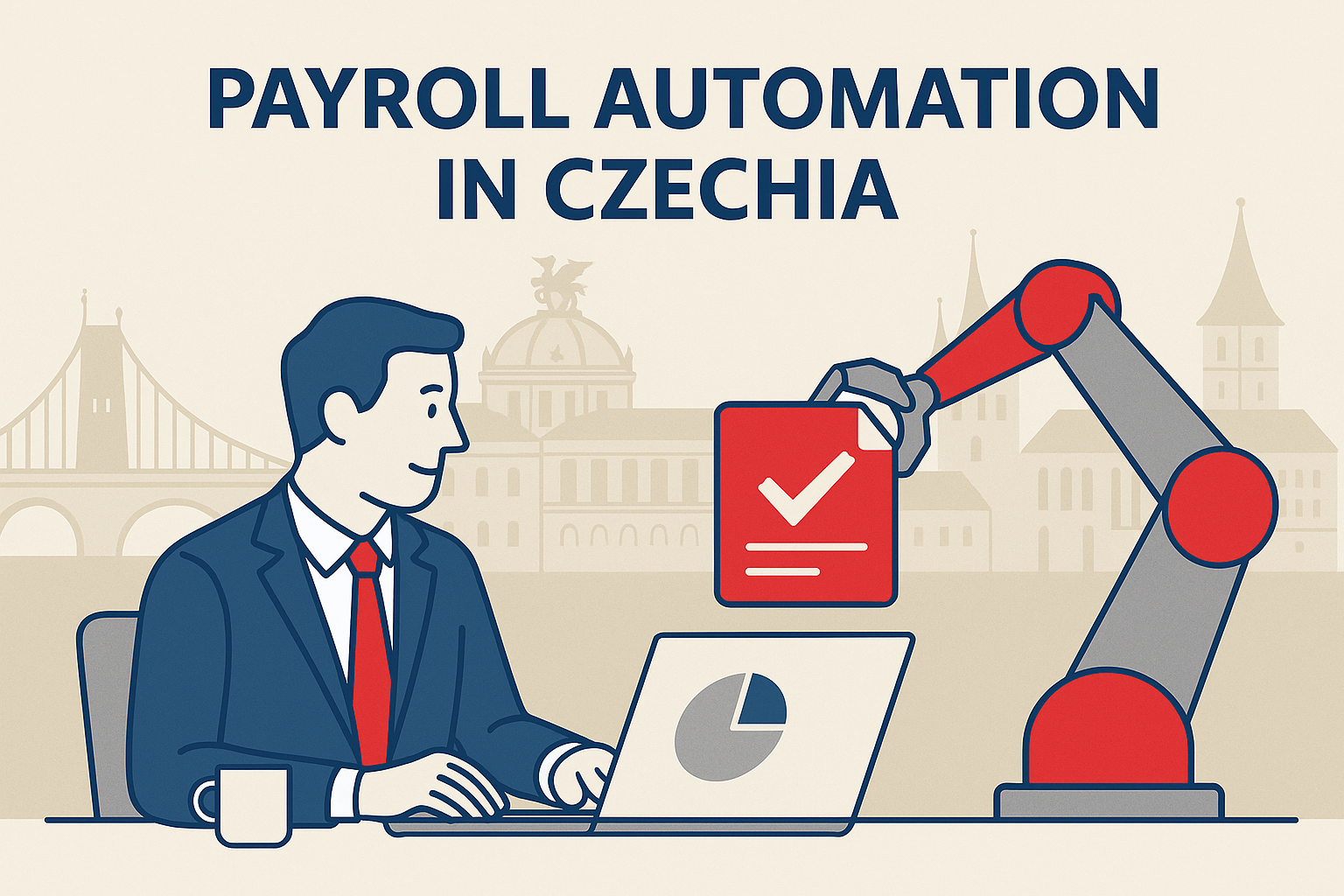Czech Payroll Automation: How to Maximize It in the Czech Republic
Updated: · 6–8 min read
Czech payroll automation is not about replacing people — it reduces manual work, minimizes errors, and frees HR & Finance to focus on strategy. Below is a pragmatic roadmap you can adopt without rebuilding your whole stack.

1) Identify repetitive tasks
Start by listing tasks that recur every cycle: HR master data updates, absence imports, timesheets, variable pay entries, statutory exports, payment files and evidence archiving. Every manual touchpoint is a candidate for automation. A quick scan often reveals 20–30% “copy-paste” time that can be removed with simple rules, templates or scheduled jobs.
2) Integrate systems where possible
Connect HRIS, attendance and payroll so changes flow end-to-end. Don’t wait for perfect APIs — even a clean CSV interface with validation (mandatory fields, formats, ranges) cuts errors dramatically. Align calendars and close dates so HR, Finance and payroll processes move in lockstep. If you outsource execution, agree clear file specs and SLAs with your provider (payroll outsourcing in the Czech Republic).
3) Standardize templates & light controls
- Single import template for HR data (hires, terminations, changes) + validation rules.
- Recurring payment files (ABO/SEPA) with IBAN checksum and net-pay totals check.
- Monthly control checklist: filings sent, receipts saved, payments confirmed.
- Central evidence archive with consistent naming & access rights.
Automation without controls = automated mistakes. Keep it light but consistent.
4) Roll out in small, safe increments
Prioritize the highest manual effort first (e.g., absence imports). Pilot with a subset of employees, compare outputs, then expand. Document what changed, who owns each step and how to back out if needed. Map your year with our Czech payroll deadlines calendar so automation doesn’t clash with statutory peaks.
5) Benefits you can measure
- Time saved: fewer manual uploads and checks.
- Accuracy: reduced data entry and calculation errors.
- Audit-readiness: complete evidence and faster reporting.
- Employee experience: clearer payslips, fewer queries (see Czech payslip basics for expats).
6) Track simple KPIs
Pick 3–5 metrics to prove value: manual touchpoints per cycle, error rate on imports, time-to-close payroll, % on-time payments and filings, number of post-payroll queries. Review monthly and adjust. Educate employees on expectations (e.g., the difference between net salary vs “take-home”).
7) Compliance & GDPR safeguards
Automating payroll means processing personal data at scale. Limit access on a need-to-know basis, encrypt data in transit, and maintain evidence of statutory submissions. Align contracts with providers and define who stores receipts (FÚ/CSSZ/ZP). For flexible hires, align your automation with contract types — see DPC vs DPP in the Czech Republic and guidance at Czech payroll for expats.
Book a consultation to review your Czech payroll process, spot automation opportunities, and create a step-by-step plan tailored to your stack.
Book a consultation
FAQ: Czech Payroll Automation
What is Czech payroll automation?
It is the use of technology to streamline and reduce manual payroll tasks. Examples include HRIS integrations, automated payment files, and standardized templates for filings.
Does automation replace payroll staff?
No. It supports them by removing repetitive work. HR and payroll specialists remain essential for compliance, audits, and employee care.
Which systems should I connect first?
Start with HRIS, time & attendance, and payroll. Add benefits or accounting later. Even CSV with validation can reduce errors significantly.
How do we keep automation GDPR-compliant?
Encrypt files in transit, restrict access, keep statutory receipts, and clarify provider roles in contracts. Always review audit trails.